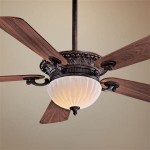Can You Paint Over Drop Ceiling Tiles? A Comprehensive Guide
Drop ceilings, also known as suspended ceilings, are a common feature in both commercial and residential buildings. They offer benefits such as concealing ductwork, wiring, and plumbing, while also providing sound absorption and ease of access for maintenance. Over time, however, these tiles can become stained, discolored, or simply outdated. Painting them seems like a straightforward solution, but the question of whether you *can* and *should* paint drop ceiling tiles is more nuanced than it initially appears. This article provides a detailed exploration of the considerations, processes, and potential pitfalls involved in painting drop ceiling tiles.
Understanding the Composition of Drop Ceiling Tiles
Before embarking on a painting project, it's crucial to understand what your drop ceiling tiles are made of. The most common material is mineral fiber, which is known for its sound-absorbing qualities. These tiles are porous and absorbent, meaning they can readily soak up moisture from both the air and from paint. Other types of drop ceiling tiles include fiberglass, gypsum, and even metal. The material composition significantly impacts the paint's adhesion, coverage, and the overall outcome of the project. Identifying the material is the first step in determining the suitability of painting.
Mineral fiber tiles typically have a textured surface that is designed to trap sound. The texture, while beneficial for acoustics, can also present challenges when painting. The paint can fill in the texture, reducing the tile's sound absorption properties. Furthermore, the porous nature of the material means it will require multiple coats of paint to achieve adequate coverage. The type of paint used must be carefully selected to minimize these negative effects.
Fiberglass tiles are less common in residential settings but are often found in commercial buildings due to their fire-resistant properties. These tiles are generally smoother than mineral fiber tiles, which makes them slightly easier to paint. However, proper preparation is still essential to ensure good adhesion and a uniform finish.
Gypsum tiles are primarily used in specialized applications where moisture resistance is paramount. These tiles are denser and less porous than mineral fiber tiles, making them a better candidate for painting. Metal ceiling tiles, while rare, are typically pre-finished and do not require painting unless the existing finish is damaged or outdated. In such cases, specialized metal primers and paints are necessary.
Assessing the Condition of Your Drop Ceiling Tiles
The condition of your drop ceiling tiles will greatly influence the feasibility and success of painting. Tiles that are heavily stained, damaged, or sagging may not be suitable for painting. Attempting to paint such tiles can exacerbate the existing problems and result in an unsatisfactory outcome. Careful inspection is necessary to identify any underlying issues that need to be addressed before proceeding with painting.
Stains from water leaks are a common problem with drop ceiling tiles. Before painting, it is imperative to identify and repair the source of the leak. Painting over water stains without addressing the underlying cause will only provide a temporary cosmetic fix. The stains will likely reappear over time, rendering the painting effort futile. In some cases, severely water-damaged tiles may need to be replaced rather than painted.
Sagging tiles indicate a problem with the supporting grid or the tiles themselves. The grid may be improperly installed or the tiles may have absorbed excessive moisture, causing them to lose their structural integrity. Painting sagging tiles will not correct the underlying issue and may even worsen the problem by adding weight to the already stressed tiles. Addressing the structural issues is a prerequisite for a successful painting project.
Tiles that are cracked, chipped, or otherwise damaged should also be carefully evaluated. Minor damage can often be repaired with patching compounds before painting. However, severely damaged tiles may be beyond repair and require replacement. Attempting to paint over extensive damage will result in an uneven and unprofessional finish.
Choosing the Right Paint and Supplies
Selecting the appropriate paint and supplies is crucial for achieving a successful and long-lasting finish on drop ceiling tiles. The type of paint, primer, and application method can significantly impact the outcome of the project. Using the wrong materials can lead to poor adhesion, uneven coverage, and a reduction in the tile's sound-absorbing properties.
Latex paint is generally the preferred choice for painting drop ceiling tiles. It is water-based, which minimizes the risk of damage to the tile's structure, and it is available in a wide range of colors and finishes. However, it is essential to choose a high-quality latex paint specifically designed for ceilings. These paints typically have a flat or matte finish, which helps to minimize glare and imperfections. Avoid using glossy or semi-gloss paints, as they can accentuate any unevenness in the tile's surface.
Primer is an essential component of the painting process. It helps to seal the porous surface of the tiles, improve paint adhesion, and prevent stains from bleeding through. A primer specifically formulated for ceilings is recommended. These primers are typically designed to cover stains and provide a uniform base for the topcoat. Apply the primer in thin, even coats, allowing it to dry completely before applying the paint.
The application method also plays a vital role in the final result. A paint sprayer is generally the best option for painting drop ceiling tiles, as it allows for even coverage and minimizes the risk of damaging the tiles. However, if a paint sprayer is not available, a high-quality roller with a short nap can be used. Use light pressure to avoid saturating the tiles with paint. Multiple thin coats are preferable to one thick coat, as this will help to prevent sagging and maintain the tile's texture.
In addition to paint and primer, other essential supplies include painter's tape, drop cloths, and safety glasses. Painter's tape is used to protect adjacent surfaces from paint splatter. Drop cloths are essential for protecting the floor and furniture from drips. Safety glasses are necessary to protect your eyes from paint spray. Proper ventilation is also crucial, especially when using a paint sprayer. Open windows and doors to ensure adequate airflow.
The Painting Process: A Step-by-Step Guide
Painting drop ceiling tiles requires careful preparation and execution to achieve a professional and lasting finish. The following step-by-step guide outlines the recommended process for painting drop ceiling tiles:
Step 1: Preparation - Begin by removing any light fixtures, air vents, or other items attached to the ceiling. Thoroughly clean the tiles with a soft brush or vacuum cleaner to remove dust, dirt, and debris. Use a damp cloth to wipe away any stubborn stains. Allow the tiles to dry completely before proceeding to the next step.
Step 2: Priming - Apply a thin, even coat of ceiling primer to the tiles using a paint sprayer or roller. Ensure that all surfaces are covered, including the edges. Allow the primer to dry completely according to the manufacturer's instructions. This may take several hours or even overnight.
Step 3: Painting - Apply the first coat of latex ceiling paint to the tiles using a paint sprayer or roller. Work in small sections and maintain a consistent distance from the tiles to ensure even coverage. Allow the paint to dry completely before applying the second coat.
Step 4: Second Coat - Apply a second coat of paint, using the same technique as the first coat. This will help to ensure complete coverage and a uniform finish. Allow the paint to dry completely before re-installing any light fixtures or other items.
Step 5: Re-installation - Carefully re-install any light fixtures, air vents, or other items that were removed prior to painting. Inspect the ceiling for any imperfections and touch up as needed. Dispose of any used paint, primer, and cleaning supplies properly.
If you choose to paint the tiles while they are still in the grid: Masking becomes crucial. Carefully tape off the grid and any surrounding walls or fixtures to prevent overspray. Ensure adequate ventilation in the room. The remaining steps remain the same: cleaning, priming, painting (multiple thin coats), and then carefully removing the masking tape. Inspect for any drips or imperfections and touch up as needed.
Potential Drawbacks and Considerations
While painting drop ceiling tiles can be a cost-effective way to refresh a space, there are several potential drawbacks and considerations to keep in mind. Understanding these potential issues can help you make an informed decision about whether or not to proceed with the project.
Reduced Sound Absorption - As previously mentioned, painting drop ceiling tiles can reduce their sound-absorbing properties. The paint fills in the pores and texture of the tiles, making them less effective at trapping sound waves. This can be a significant concern in areas where noise control is important, such as offices, classrooms, and home theaters. If sound absorption is a primary concern, consider alternative solutions such as replacing the tiles with new, high-performance acoustic tiles.
Increased Weight - Paint adds weight to the drop ceiling tiles, which can strain the supporting grid. This is especially true if multiple coats of paint are applied. Over time, the added weight can cause the grid to sag or even collapse. To mitigate this risk, use lightweight paints and apply them in thin, even coats. Inspect the grid regularly for any signs of sagging or stress.
Difficulty Removing Tiles - Painting drop ceiling tiles can make them more difficult to remove in the future. The paint can cause the tiles to stick to the grid, making it challenging to lift them out for maintenance or repairs. This can be a significant inconvenience if you need to access the space above the ceiling to work on wiring, plumbing, or ductwork. To minimize this risk, apply a thin coat of paint to the edges of the tiles and avoid getting paint on the grid itself.
Potential for Damage - Drop ceiling tiles are fragile and can be easily damaged during the painting process. Rough handling, excessive pressure, or the use of harsh cleaning agents can all lead to cracks, chips, or other damage. To avoid damaging the tiles, handle them with care and use gentle cleaning methods. If you are using a paint sprayer, maintain a consistent distance from the tiles to prevent oversaturation. If you are using a roller, apply light pressure and avoid rolling over the same area multiple times.

How To Paint A Drop Ceiling The Painting Company

How To Paint A Drop Ceiling The Painting Company

How To Make A Drop Ceiling Look Better

How To Make A Drop Ceiling Look Better

How To Paint A Drop Ceiling The Painting Company

Ceiling Tile Paint Ideas How You Can Make Your Really Stand Out Decorative Tiles Inc

Ceiling Makeover Nesting With Grace

How To Paint Suspended Ceiling Tiles Doityourself Com

How To Make A Drop Ceiling Look Better

How To Makeover Drop Ceiling Tiles
Related Posts








